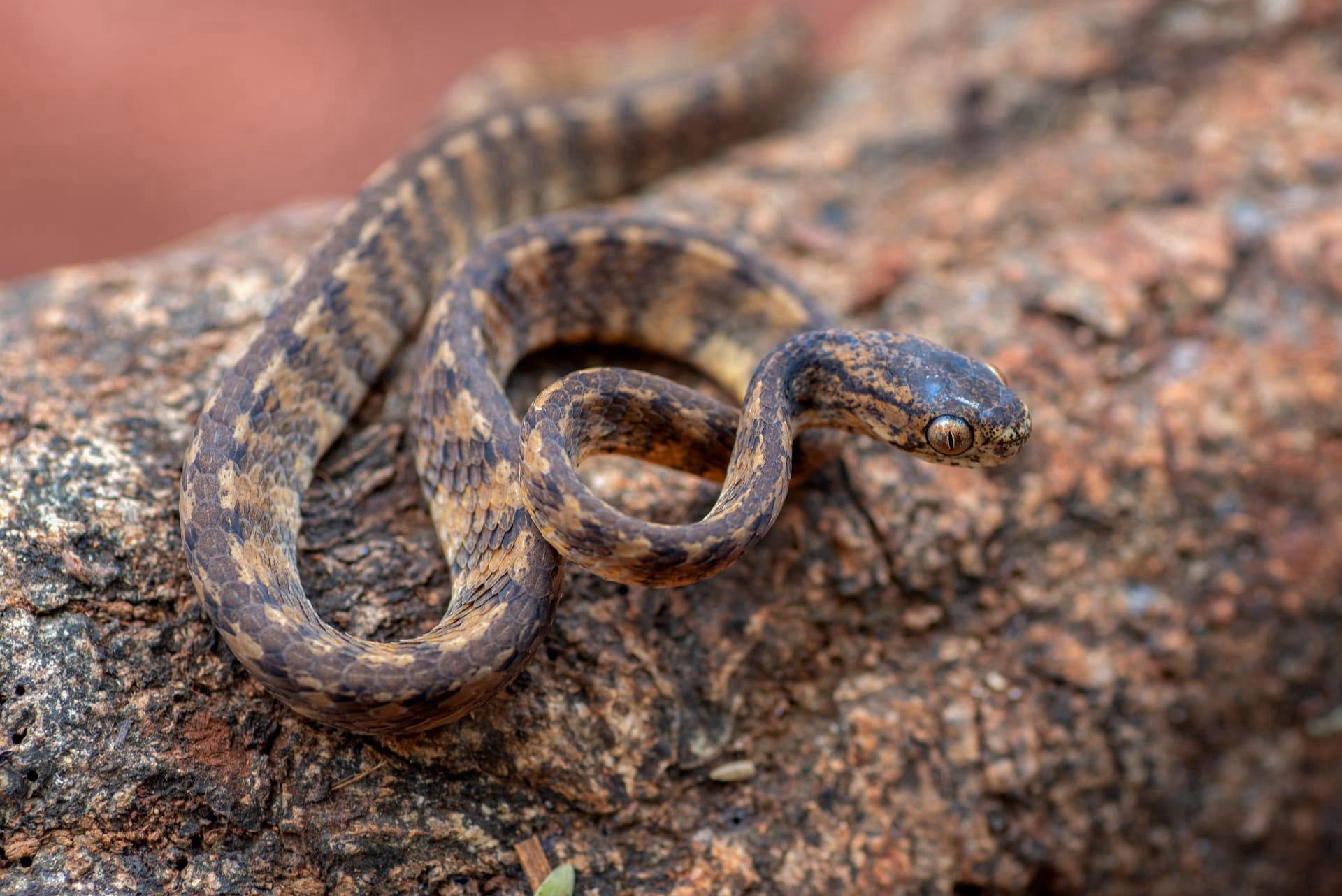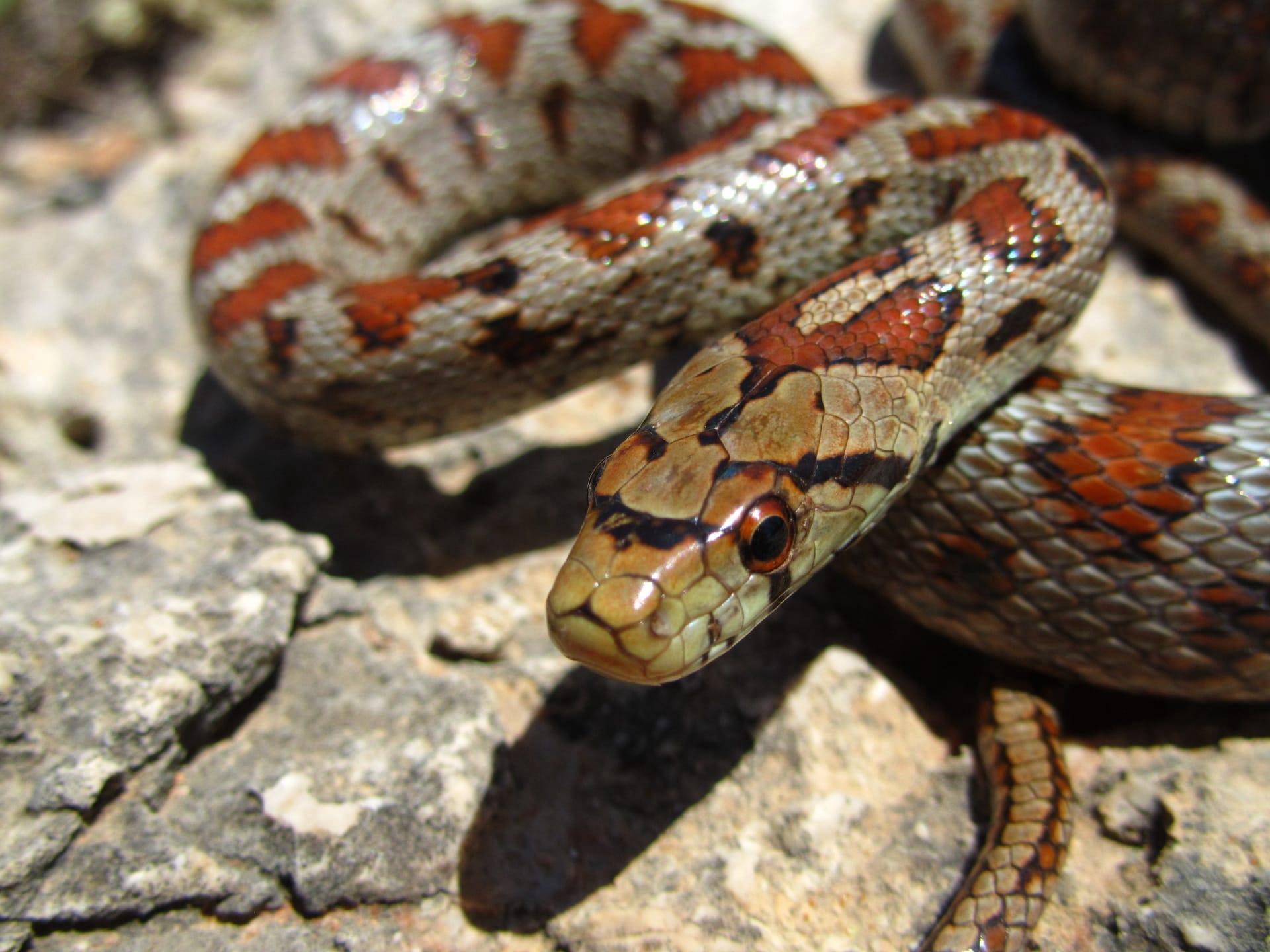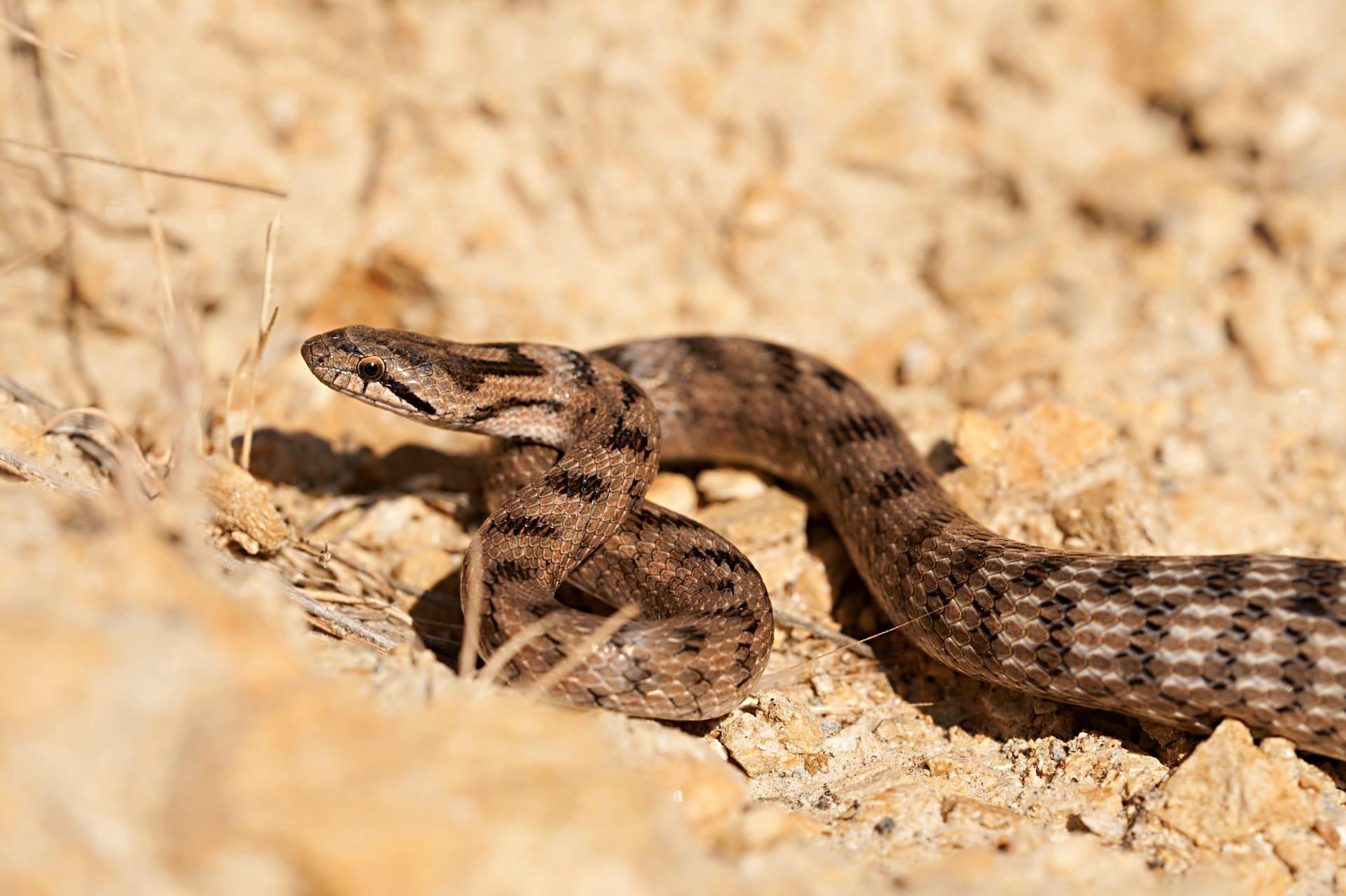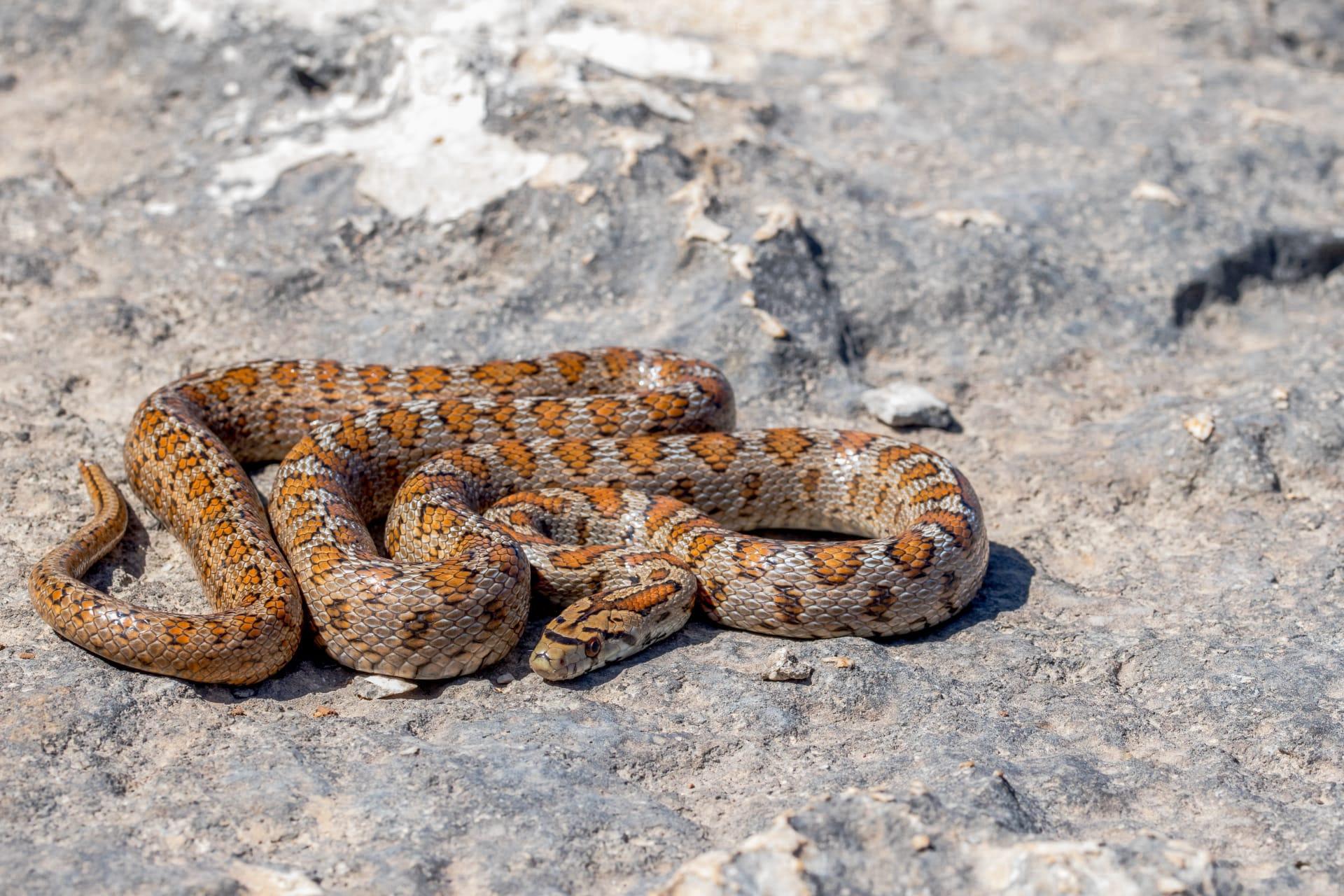1
Gopher snakes, found across North America, are remarkable for their adaptability in various environments. Unlike many other species, they thrive in diverse habitats, ranging from coastal dunes to dense forests, and even arid deserts. This adaptability is key to their survival, allowing them to find food and shelter in places other snakes can't. Remarkably, they can grow up to 7 feet long, but the average size is usually around 4 to 5 feet. This size variation is not just impressive; it's a testament to their ability to thrive in different conditions and find ample food sources across these varied landscapes.
Another fascinating aspect of the gopher snake is its defense mechanism. When threatened, it can mimic a rattlesnake by flattening its head to appear more triangular, similar to a viper, and shaking its tail. This behavior can produce a rattling sound, especially if done in dry foliage, effectively fooling predators into thinking it's a more dangerous rattlesnake. This mimicry is an extraordinary example of how animals adapt behaviors for survival. Interestingly, despite their mimicry, gopher snakes are non-venomous and pose no threat to humans.

2
One of the most intriguing behaviors of the gopher snake is its hunting strategy. These snakes are constrictors, meaning they do not use venom to subdue their prey. Instead, they use their powerful bodies to wrap around and squeeze their prey, usually small mammals like gophers (hence their name), birds, and eggs. They have a strong jaw and a flexible skull that allows them to swallow prey larger than their head. The gopher snake's diet is a crucial aspect of controlling rodent populations in their habitats, making them beneficial to farmers and helping maintain ecological balance.
Gopher snakes also have a unique way of navigating their environment. They use their forked tongue to 'taste' the air, picking up scent particles that help them locate prey or avoid predators. This sensory adaptation is fascinating, as it provides a vivid example of how animals have evolved specialized organs to survive and thrive in their ecosystems. Additionally, gopher snakes have heat-sensing pits on their face, similar to those of pit vipers, which aid in detecting warm-blooded prey in low light conditions, highlighting their remarkable adaptation to various hunting scenarios.

3
Regarding reproduction, gopher snakes exhibit interesting behaviors. They are oviparous, meaning they lay eggs rather than giving birth to live young. A female gopher snake can lay between 2 and 24 eggs per clutch, depending on her size and health. These eggs are usually deposited in warm, moist areas like rotting logs or under rocks to ensure optimal conditions for incubation. The eggs hatch after about 65 to 75 days, with the young snakes being completely independent from birth. This reproductive strategy shows a fascinating aspect of their life cycle and how it's adapted to their habitats.
Another notable characteristic of gopher snakes is their lifespan and growth. In the wild, these snakes can live up to 15 years, which is relatively long for a snake. Their growth rate is also notable; they can grow rapidly in their first few years, reaching almost full size. However, this growth rate slows down as they mature. This longevity and growth pattern are indicative of their adaptability and survival strategies in the wild, reflecting the balance between their predatory skills and vulnerability to larger predators.

4
Gopher snakes have an intriguing way of interacting with their environment, particularly in how they move. They use a method of locomotion called 'serpentine motion,' where they propel themselves forward by bending their body in a series of S-shaped curves. This movement is highly efficient, allowing them to navigate through various terrains, from sandy dunes to rocky crevices. This locomotion style is not just a means of transport; it reflects their adaptability and efficiency in hunting and escaping predators.
In terms of sensory perception, gopher snakes have an excellent sense of hearing, despite lacking external ears. They detect vibrations through the ground, which helps them to sense approaching predators or prey. This form of hearing is quite different from humans and adds to their survival toolkit. It's fascinating how they can interpret these vibrations to understand their surroundings, showcasing another layer of their remarkable adaptation to the environment.

5
Gopher snakes are known for their seasonal behavior changes. During the winter months, they brumate, a process similar to hibernation but for reptiles. During brumation, they become less active and their metabolic rate slows down, but they do not sleep continuously like mammals in hibernation. This period of reduced activity usually lasts from late fall to early spring, depending on the climate. This adaptation allows them to conserve energy during times when food is scarce, demonstrating their resilience and ability to endure changing environmental conditions.
Lastly, gopher snakes play a significant role in their ecosystem as both predators and prey. While they help control rodent populations, they are also prey for larger animals like birds of prey and coyotes. This dual role highlights the importance of gopher snakes in maintaining ecological balance. Their presence helps to keep the rodent population in check, which can prevent the overgrazing of vegetation and maintain the health of the ecosystem. On the other hand, as a food source for larger predators, they contribute to the biodiversity and health of their habitats, making them an integral part of the ecological community.